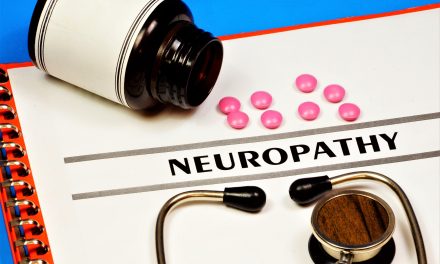Neuropathy, or peripheral neuropathy, refers to a range of conditions involving damage to the peripheral nerves. These nerves are responsible for transmitting signals between the central nervous system (the brain and spinal cord) and the rest of the body. Symptoms of neuropathy can vary widely but typically include numbness, tingling, pain, and muscle weakness in the affected areas. Understanding the origins of neuropathy is crucial for diagnosis and treatment, and it is important to acknowledge that its causes are diverse and can include both hereditary and acquired factors.
Some of the most common sources of neuropathy are diseases like diabetes, where prolonged high blood sugar levels damage the nerves. This form of neuropathy is known as diabetic neuropathy and is one of the most prevalent types. Other causes encompass nutritional deficiencies, particularly of B-vitamins, which are vital for nerve health, as well as chronic conditions such as kidney disease that can lead to the accumulation of toxins in the body affecting nerve function. Neuropathies can also be idiopathic, meaning the cause remains unknown, or they may result from inflammatory conditions, genetic mutations, direct injuries, or exposure to toxins.
Key Takeaways
- Neuropathy involves damage to the peripheral nerves, resulting in a range of symptoms.
- Common causes include diabetes, nutritional deficiencies, and chronic medical conditions.
- The origin of neuropathy can sometimes remain unidentified, but various factors play a role.
Understanding Neuropathy
Neuropathy is a complex condition involving nerve damage that manifests in various forms and has numerous potential causes. Its understanding requires a grasp of its classification and underlying biological mechanisms.
Definition and Types
Neuropathy, fundamentally, is the dysfunction or damage of one or more peripheral nerves, leading to numbness, pain, and muscle weakness in various parts of the body. Neuropathies are broadly classified into four main types:
- Peripheral Neuropathy: Affects nerves outside the brain and spinal cord.
- Cranial Neuropathy: Involves any of the twelve cranial nerves.
- Autonomic Neuropathy: Damages nerves that control involuntary bodily functions.
- Focal Neuropathy: Refers to damage to a single nerve, usually in the hand, head, torso, or leg.
Each type further includes various subtypes defined by cause, affected nerve types, and symptom patterns.
Pathophysiology
The pathophysiology of neuropathy centers on the mechanisms causing nerve damage or dysfunction. These might include:
- Metabolic and Endocrine Disorders: Diabetes mellitus is the most common cause, where excess glucose leads to nerve damage.
- Infections: Viruses and bacteria that can attack nerve tissues, such as the herpes simplex virus or Lyme disease bacteria, may cause neuropathies.
- Genetic Disorders: Certain inherited disorders, such as Charcot-Marie-Tooth disease, involve neuropathy.
- Exposure to Toxins: Chemicals and heavy metals can damage peripheral nerves.
- Trauma or Pressure: Physical injury to nerves from accidents, surgeries, or repetitive stress can induce neuropathy.
This list is illustrative but not exhaustive, as numerous other factors may also contribute to nerve damage. The specific biological processes of neuropathy can vary widely, reflecting the diversity of its causes and manifestations.
Causes of Neuropathy
Neuropathy arises from a variety of sources, each contributing in different ways to nerve damage and dysfunction. The underlying causes range from genetic mutations to environmental exposures.
Genetic Factors
Certain types of neuropathy are hereditary, resulting from specific genetic mutations that affect nerve function. Hereditary neuropathies, such as Charcot-Marie-Tooth disease, manifest with varying degrees of severity and can be inherited in an autosomal dominant, recessive, or X-linked pattern.
Metabolic and Endocrine Disorders
Diabetes is the most common metabolic cause of neuropathy. High blood sugar levels can lead to diabetic neuropathy, damaging both peripheral and autonomic nerves. Other endocrine disorders that contribute to neuropathic conditions include hypothyroidism and acromegaly.
Infectious Diseases
Various infections can cause neuropathy. HIV, hepatitis B and C, and Lyme disease are examples of infections where the virus or bacteria directly attack nerve tissues or trigger immune responses that inadvertently damage nerves.
Autoimmune Conditions
Autoimmune diseases like rheumatoid arthritis, lupus, and Sjögren’s syndrome can lead to neuropathy. In these conditions, the immune system mistakenly attacks the body’s own nerve tissue, resulting in inflammation and damage.
Toxins and Drugs
Exposure to toxins, including heavy metals like lead and mercury, can result in toxic neuropathy. Certain medications, particularly chemotherapy agents, can also cause nerve damage as a side effect of treatment.
Trauma and Injury
Nerves can be compressed, stretched, or severed as a result of traumatic injuries. Acute trauma from accidents, repetitive stress injuries, or surgeries can lead to neuropathic pain and dysfunction.
Tumors
Both benign and malignant tumors can induce neuropathy by exerting pressure on nerve structures or by infiltrating nerve tissue. Paraneoplastic syndromes, associated with some cancers, can also lead to neuropathic symptoms due to immune-mediated damage.
Diabetic Neuropathy
Diabetic neuropathy is a common complication of diabetes, involving a variety of progressive nerve disorders caused by the disease. Specific management strategies are key in addressing this condition.
Prevalence
Diabetic neuropathy affects a significant portion of individuals with diabetes. Estimates suggest that up to 50% of patients with diabetes may eventually develop some form of neuropathy.
Mechanisms
The development of diabetic neuropathy is associated with prolonged high blood sugar levels. Over time, this can lead to nerve damage primarily due to:
- Microvascular injury, affecting blood vessels that carry oxygen and nutrients to nerves
- Direct neuronal injury from elevated glucose levels
- Metabolic disturbances, such as the polyol pathway, leading to nerve cell damage
Management Strategies
The holistic management of diabetic neuropathy involves several approaches:
- Glycemic Control: Tight control of blood sugar levels can slow the progression of neuropathy.
- Medications: Several medications are used to alleviate pain, including:
- Antidepressants
- Anticonvulsants
- Opioids (for severe cases)
- Lifestyle Modifications: Incorporating:
- Regular exercise
- Healthy eating
- Smoking cessation
- Regular Foot Care: Crucial to prevent complications such as ulcers or infections.
Nutritional Deficiencies and Neuropathy
Nutritional deficiencies are a significant cause of neuropathy. They disrupt nerve function by depriving nerves of essential nutrients needed for maintenance and repair.
Vitamin B12 Deficiency
Vitamin B12 is crucial for nerve health. A deficiency can lead to neuropathy, characterized by tingling, weakness, and pain in the limbs. It is typically seen in individuals with conditions that affect B12 absorption, such as pernicious anemia or gastric bypass surgery. Key dietary sources of B12 include:
- Meat
- Fish
- Dairy products
- Fortified cereals
For vegetarians or those with absorption issues, B12 supplements or injections may be necessary.
Other Nutritional Causes
Neuropathy can also arise from other nutrient deficiencies, notably:
- Vitamin B1 (Thiamine): Essential for nerve signal conduction. Deficiency often linked to alcohol abuse.
- Vitamin B6 (Pyridoxine): Important for nerve function. Both deficiency and excess intake can lead to neuropathy.
- Vitamin E: Protects nerves from oxidative damage. Deficiency usually occurs due to fat absorption disorders.
- Copper and Magnesium: Deficiencies can affect nerve function and signal transmission.
A balanced diet is crucial to prevent these nutritional deficiencies. Supplements should be considered under medical guidance to avoid complications from improper use.
Neuropathy in Chronic Kidney Disease
Neuropathy in chronic kidney disease (CKD) patients is a common complication, characterized by nerve damage due to poor kidney function. The condition can affect physical sensation, muscle strength, and automatic functions.
Prevalence and Progression
The prevalence of neuropathy in CKD patients increases as kidney function deteriorates. It is estimated that over 60% of patients with advanced CKD suffer from neuropathy. The progression of neuropathy correlates with the severity of kidney disease; it is more prevalent and severe in patients on dialysis.
- Stage 3 CKD: Mild to moderate neuropathy symptoms
- Stage 4 CKD: Moderate to severe symptoms
- Stage 5 CKD (End-Stage Renal Disease): Most severe neuropathy symptoms, usually requiring dialysis
In CKD, neuropathy typically presents as a peripheral neuropathy, affecting the longest nerves first, which means symptoms often begin in the feet. As CKD advances, nerve damage progresses, potentially leading to complications such as foot ulcers.
Treatment Options
The treatment of neuropathy in CKD focuses on managing symptoms and slowing progression. Here are some commonly used treatment methods:
- Glycemic Control: Strict control of blood sugar levels for diabetic patients
- Medication: Use of anti-seizure drugs, like gabapentin and pregabalin, for pain management
- Physical Therapy: Exercises to maintain muscle strength and function
- Dialysis: Improvement in neuropathy symptoms has been noted with regular dialysis in End-Stage Renal Disease patients
It is important for CKD patients to work closely with their healthcare providers to monitor and manage neuropathy effectively.
Idiopathic Neuropathy
Idiopathic neuropathy refers to nerve damage that occurs without a known cause. Despite extensive testing, in these cases, the origin of the neuropathy remains unclear.
Epidemiology
According to scientific studies, idiopathic neuropathy is responsible for about 23% of all neuropathies. It generally appears in middle-aged and elderly populations. The most common type identified is idiopathic peripheral neuropathy, which predominantly affects sensory nerves.
- Age Group Affected:
- Middle-aged: Moderate prevalence
- Elderly: Higher prevalence
- Prevalence:
- Idiopathic neuropathy: 23% of neuropathies
Current Research
Current research in idiopathic neuropathy focuses on discovering biomarkers for early detection and understanding the pathophysiological mechanisms. Genetic studies are examining potential hereditary patterns, while other research explores environmental factors, despite the lack of a definitive cause.
Research Areas:
- Genetic studies: Exploring hereditary patterns.
- Biomarkers: Identifying indicators for early detection.
- Pathophysiology: Understanding underlying mechanisms.
- Environmental Factors: Investigating non-genetic triggers.
Recent studies have discovered that metabolic and immune system abnormalities may play a role in idiopathic neuropathy, indicating possible directions for future research.
Inflammatory Neuropathies
Inflammatory neuropathies encompass a range of disorders where the body’s immune system inappropriately attacks the peripheral nerves, causing varied symptoms such as pain, weakness, and sensory abnormalities.
Characteristics
Inflammatory neuropathies can be acute or chronic. They are characterized by:
- Autoimmunity: The immune system erroneously targets peripheral nerves.
- Inflammation: Resulting from the immune response, leading to nerve damage.
- Symptom Variety: Patients may experience pain, numbness, or weakness, which can be indicative of the type and extent of neuropathy.
- Progression: The course can be rapidly progressing, as in Guillain-Barré syndrome, or slow and chronic as in chronic inflammatory demyelinating polyneuropathy (CIDP).
Diagnostic Methods
Effective diagnosis of inflammatory neuropathies involves multiple approaches:
- Clinical Examination:
- History of symptom progression.
- Neurological assessment to determine the impact on motor and sensory functions.
- Laboratory Tests:
- Blood tests for markers of inflammation and autoimmunity.
- Cerebrospinal fluid (CSF) analysis for elevated protein levels without an increase in cell count.
- Electrodiagnostic Testing:
- Nerve Conduction Studies (NCS) and Electromyography (EMG) to assess nerve function.
- Biopsy:
- Nerve biopsy may be conducted in certain cases to confirm diagnosis and rule out other causes.
Toxic Neuropathy
Toxic neuropathy results from exposure to substances that can cause damage to the nervous system. This condition is characterized by nerve damage that leads to various symptoms such as pain, numbness, and weakness.
Chemotherapy-Induced
Chemotherapy drugs are integral in cancer treatment, but they can also lead to toxic neuropathy. Agents such as vincristine, cisplatin, and paclitaxel are known to be neurotoxic. These drugs may cause damage to the peripheral nerves, and symptoms can range from mild tingling to severe pain or motor dysfunction. The likelihood and severity of neuropathy depend on factors such as the:
- Type of chemotherapy agent
- Dosage received
- Patient’s individual risk factors
| Chemotherapy Agent | Common Symptoms of Neuropathy |
|---|---|
| Vincristine | Numbness, tingling, motor changes |
| Cisplatin | Sensory alterations, gait disturbances |
| Paclitaxel | Pain, temperature sensitivity |
Environmental Toxins
Environmental toxins like heavy metals, organic compounds, and industrial chemicals can cause toxic neuropathy when individuals are exposed to these substances. Lead, arsenic, mercury, and thallium are heavy metals with neurotoxic potential. Symptoms from exposure to these toxins often include:
- Sensory disturbances
- Motor weakness
- Autonomic dysfunction
Pesticides and solvents, such as organophosphates and n-hexane, also contribute to toxic neuropathy by disrupting nerve function. Protective measures and proper industrial hygiene are crucial in preventing the onset of neuropathy from environmental toxins. The table below gives examples of environmental toxins and their associated symptoms.
| Environmental Toxin | Associated Symptoms of Neuropathy |
|---|---|
| Lead | Abdominal pain, cognitive changes |
| Arsenic | Skin lesions, sensory changes |
| Mercury | Tremors, emotional instability |
| Thallium | Hair loss, gastrointestinal issues |
Hereditary Neuropathies
Hereditary neuropathies are a group of genetic disorders affecting the peripheral nerves. They are characterized by nerve degeneration that is passed down through families.
Charcot-Marie-Tooth Disease
Charcot-Marie-Tooth disease (CMT), the most common hereditary neuropathy, insidiously affects peripheral nerves. The disorder has several forms, with symptoms typically appearing in adolescence or early adulthood. CMT Type 1 and Type 2 are the main subtypes, distinguished by their genetic cause and pattern of nerve damage.
- Type 1: Caused by abnormalities in the myelin sheath, with slower nerve conduction.
- Genes: PMP22, MPZ
- Inheritance: Autosomal dominant
- Type 2: Results from direct damage to the axons, normal nerve conduction velocities.
- Genes: MFN2, RAB7
- Inheritance: Autosomal dominant
Patients experience muscle weakness, atrophy, and sensory loss, often first noted in the feet. CMT can also lead to foot deformities such as high arches and hammer toes.
Other Hereditary Disorders
Other hereditary neuropathies encompass a range of diverse conditions with varying genetic causes and symptoms.
- Hereditary Sensory and Autonomic Neuropathy (HSAN):
- Genes involved include SPTLC1, RAB7, and others.
- Causes loss of sensation, particularly pain and temperature, with variable onset.
- Hereditary Neuropathy with Liability to Pressure Palsies (HNPP):
- Gene: PMP22
- Patients have recurrent episodes of numbness, tingling, and muscle weakness.
- Familial Amyloid Polyneuropathy:
- Gene: TTR
- Features include sensory and autonomic dysfunction and variable motor involvement.
Each subtype of neuropathy can be diagnosed through genetic testing, allowing for personalized management and counseling for affected individuals and their families.
Neuropathic Pain
Neuropathic pain arises from damage to the nerves themselves, either from injury or disease. It is often chronic and can vary from mild to severe, manifesting in sensations such as burning, tingling, or shooting pains.
Symptom Management
Managing the symptoms of neuropathic pain often involves a combination of strategies. Patients may use:
- Physical therapies: Including gentle exercise and physical therapy to reduce discomfort and improve mobility.
- Psychological methods: Such as cognitive-behavioral therapy to help cope with pain.
- Complementary techniques: Like acupuncture or transcutaneous electrical nerve stimulation (TENS).
Pharmacological Treatments
The pharmacological approach to neuropathic pain typically includes:
- Antidepressants: Such as tricyclic antidepressants (TCA) and serotonin-norepinephrine reuptake inhibitors (SNRI) to alleviate pain.
- Anticonvulsants: Medications like gabapentin or pregabalin are effective for nerve pain.
- Topical treatments: Lidocaine patches or capsaicin cream can provide localized relief.
- Opioids: In some cases, opioids may be prescribed for severe pain, though they are used cautiously due to the risk of addiction.
Diagnosing Neuropathy
Diagnosing neuropathy involves a series of evaluations to determine the presence and cause of nerve damage. These evaluations are critical to developing an effective treatment plan.
Clinical Examination
During a clinical examination, a healthcare provider assesses the patient’s medical history and conducts a complete physical and neurological examination. They check for muscle strength, reflexes, skin condition, and sensitivity to touch, vibration, and temperature. This examination helps to identify the presence of neuropathy and its potential impact on the patient’s daily functions.
Electrodiagnostic Testing
Electrodiagnostic testing may include tests such as nerve conduction studies (NCS) and electromyography (EMG). These tests are essential for measuring the electrical activity in nerves and muscles.
- Nerve Conduction Studies (NCS): NCS measures how fast electrical signals move through a nerve. This is crucial for identifying the location and extent of nerve damage.
- Electromyography (EMG): EMG assesses the health of muscles and the nerves controlling them. Abnormal muscle responses can signal the presence of neuropathy.
Laboratory Tests
Laboratory tests can identify underlying conditions that might be causing neuropathy. These tests typically include:
- Blood Tests: Blood tests check for high blood sugar levels, kidney function, and nutrient deficiencies such as vitamin B12.
- Serological Tests: These evaluate for autoimmune diseases or infectious conditions that could cause nerve damage.
- Other Specialized Tests: Depending on the suspected cause, additional tests such as imaging studies or a nerve biopsy may be conducted.
Frequently Asked Questions
This section provides succinct, evidence-based answers to common questions regarding neuropathy, particularly focusing on treatments, prognosis, symptoms, causes, and recovery aspects.
What are the primary treatments for neuropathy in the legs and feet?
Treatments for neuropathy in the legs and feet typically include medications such as pain relievers, anticonvulsants, and antidepressants. In some cases, therapies like electrical nerve stimulation, physical therapy, or foot care can also be recommended to manage symptoms.
Is it possible to cure neuropathy, and if so, how?
Curing neuropathy is contingent on its cause. Some types of neuropathy, such as those caused by vitamin deficiencies or certain medications, can be reversible if the cause is addressed. However, many forms of neuropathy are chronic and management focuses on symptom relief and prevention of further nerve damage.
What is the life expectancy for someone living with neuropathy?
Life expectancy can be affected by the underlying condition causing the neuropathy, rather than the neuropathy itself. Effective management of the underlying condition, and maintaining general health, can help individuals live as long as the typical population.
What are the typical symptoms associated with peripheral neuropathy?
Typical symptoms of peripheral neuropathy include numbness, tingling, pain, and weakness in the affected areas. These can lead to sensitivity to touch and muscle wasting. Symptoms often start in the hands and feet and can spread to other parts of the body.
What are the predominant causes of neuropathy globally?
The predominant causes of neuropathy globally include diabetes, injury, autoimmune diseases, infections, inherited disorders, and exposure to toxins. In some instances, the cause can be idiopathic, meaning it arises spontaneously with no identifiable cause.
Is full recovery from neuropathy a possibility, and what factors influence it?
Full recovery from neuropathy is possible, especially if it is caught early and the underlying cause is treatable. Factors influencing recovery include the type of neuropathy, its severity, duration, and the patient’s overall health. Early intervention can significantly improve the prognosis.
Conclusion
In conclusion, neuropathy can stem from a variety of origins and causes, including diabetes, infections, traumatic injuries, and autoimmune disorders. Understanding the underlying factors contributing to neuropathy is crucial in developing effective treatment and management strategies. By addressing the root causes and risk factors, individuals can work towards preventing or minimizing the impact of neuropathy on their overall health and well-being. Continued research into the origins of neuropathy is essential for advancing our understanding and improving the development of targeted interventions for this condition.




















